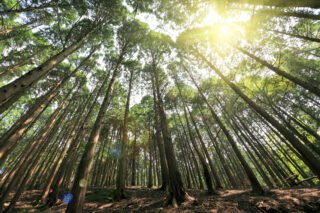Table of Contents
- The History and Significance of the California State Tree
- The California Redwood – A Natural Wonder
- The Natural Habitat of the California Redwood
- The California Redwood – Unique Characteristics
- The California Redwood – Locations and Preservation
- The Size and Measurements of the California Redwood
- The Conservation Efforts and Future of the California Redwood
- FAQ
- What is the California State Tree?
- How was the California Redwood designated as the state tree?
- What is the significance of the California State Tree?
- What are the characteristics of the California Redwood?
- Where is the natural habitat of the California Redwood?
- What are the unique characteristics of the California Redwood?
- Where can I find the California Redwood?
- How large can the California Redwood grow?
- What are the conservation efforts for the California Redwood?
When visiting California, one cannot help but notice the magnificent trees that tower over the landscape. These trees are none other than the California Redwood – the official state tree of California. As a professional copywriting journalist, I have delved deep into the history, significance, and unique characteristics of this natural wonder.
Join me in this journey of discovery as we explore the breathtaking beauty of the California Redwood, and learn why it is such a revered symbol of the state.
- The California State Tree is the California Redwood, a majestic species of tree that holds a special place among state symbols.
- The Redwood was designated as the official state tree by the state legislature in 1937, and is a source of pride for Californians.
- The Redwood is known for its incredible size and unique characteristics, including its thick bark that protects it from wildfires.
- The natural habitat of the Redwood is found in state parks, national parks, and redwood forests along the California coast.
- Conservation efforts are underway to protect this natural wonder, which remains a vital part of California’s ecosystem.
The History and Significance of the California State Tree
As a professional copywriting journalist, I find it essential to explore the history and significance of the California State Tree, which is the majestic California Redwood. In 1937, the California State Legislature designated the official state tree, and the California Redwood holds a special place among the state symbols.
The California Redwood is not only a symbol of the state’s natural beauty but also a testament to its ecological richness. The state’s legislators recognized the importance of conserving the redwood trees, which once covered vast areas on the west coast of North America. The designation of the California Redwood as the official state tree further emphasized the state’s commitment to preserving its natural heritage.
The state of California has a long and storied history of environmental conservation. The state’s lawmakers were among the first in the country to pass laws to protect the environment. The official designation of the California Redwood as the state tree is just one example of the state’s commitment to environmental protection and conservation.

The California Redwood is not only a natural wonder but a cultural icon of the state. Its history and significance are integral to the identity of California. As a journalist, I am fascinated by the stories and culture that surround this uniquely Californian species, and I feel privileged to share them with you.
The California Redwood – A Natural Wonder
When it comes to natural wonders, the California Redwood is an undeniable standout. Not only is it the largest tree in the world, but it also holds the title for the tallest. These trees belong to two distinct species, the coast redwood (Sequoia sempervirens) and the giant sequoia (Sequoiadendron giganteum).
The coast redwood can grow up to 379 feet tall, with the tallest recorded redwood reaching a staggering 415 feet. Meanwhile, the giant sequoia is known for its immense trunk diameter, reaching up to 29 feet wide.
These trees are also known for their impressive growth rate, with some growing up to 10 feet per year. They cover around two million acres along the California coast, making them not only a natural wonder but also a vital part of the state’s ecosystem.

The California Redwood’s natural beauty and significance have resulted in its preservation in state parks, national parks, and old-growth areas. Tourists and nature enthusiasts alike flock to these locations to witness the majesty of these trees in person.
Overall, the California Redwood is a truly remarkable natural wonder, with its size, growth rate, and beauty making it a must-see attraction for anyone visiting the state.
The Natural Habitat of the California Redwood
If you’re hoping to see the California Redwood in its natural habitat, you’re in luck – there are several locations where you can find these majestic trees. State parks and national parks, such as Redwood National and State Parks and Humboldt Redwoods State Park, are just a few examples of where you can find these towering trees.
Redwood forests are another prime location to view the California Redwood. These forests are typically found in coastal regions of California, particularly the Sierra Nevada. Their preference for coastal regions is likely due to the cooler temperatures and year-round moisture found in these areas.
It’s important to note that while there are several locations where you can view these trees, not all are old-growth forests. Old-growth forests are areas where the trees have been allowed to grow and mature without human interference. These areas provide a glimpse into what the California Redwood forests may have looked like before they were logged in the late 1800s and early 1900s.
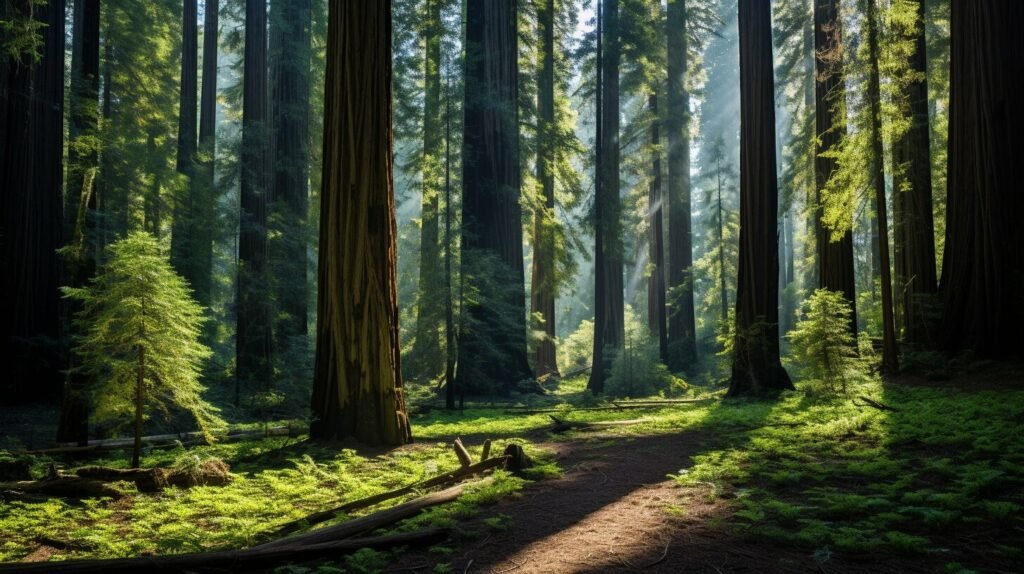
Despite the extensive logging that took place, there are still many areas where towering trees are preserved. These preserved areas serve not only as a reminder of the historical significance of the California Redwood but also as a means of protecting the trees for future generations.
The Two Distinct Species of the California Redwood
While most people are familiar with the California Redwood, it’s important to note that there are actually two distinct species – the coast redwood (Sequoia sempervirens) and the giant sequoia (Sequoiadendron giganteum).
The coast redwood is the tallest of the two species, with heights of up to 379 feet. These trees are typically found in coastal regions, where they benefit from the cooler temperatures and year-round moisture. The giant sequoia, on the other hand, is not as tall as the coast redwood, but it makes up for that with its massive trunk. The trunk of a giant sequoia can measure up to 40 feet in diameter, making it one of the largest living things on Earth.
Both species can be found in state parks, national parks, and old-growth forests throughout California, although their specific habitats may differ slightly. Regardless of the species, seeing these trees in person is an awe-inspiring experience that everyone should have at least once in their lifetime.
The California Redwood – Unique Characteristics
The California Redwood is a natural wonder with a variety of unique characteristics that make it an essential part of the state’s ecosystem. One distinguishing feature is its thick bark, which acts as a natural fire retardant and allows the tree to survive wildfires that would destroy other species.
The growth of the California Redwood is heavily dependent on the weather conditions, with winter rain and summer coastal fog playing a crucial role in providing the necessary moisture for the trees. As a result, these magnificent trees are primarily found along the California coast, where they cover roughly two million acres.
The coast redwoods, one of the two distinct species of the California Redwood, are known to be the tallest trees in the world, with heights reaching up to 379.7 feet. These towering trees are covered in a thick layer of needles that absorb moisture from the surrounding coastal fog, allowing them to grow to such impressive heights.
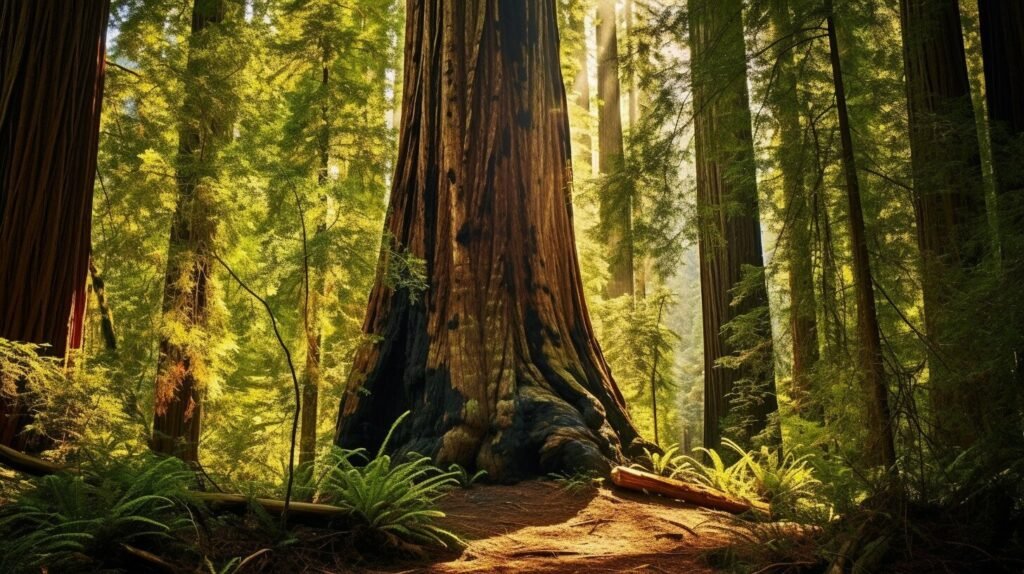 The coastal fog also serves to regulate the temperature around the trees, protecting them from the harsh summer sun and wind. This unique ecosystem is essential to the survival of the California Redwood and is carefully preserved in various national parks and forests, where visitors can marvel at the majesty of these towering trees.
The coastal fog also serves to regulate the temperature around the trees, protecting them from the harsh summer sun and wind. This unique ecosystem is essential to the survival of the California Redwood and is carefully preserved in various national parks and forests, where visitors can marvel at the majesty of these towering trees.
The California Redwood – Locations and Preservation
The California Redwood is found in diverse locations along the California coast, with some stands located within 50 miles of the Pacific Ocean. These trees thrive in the cool, damp climate of the region and prefer to grow in areas with mild winters and summers, making national parks and forests, as well as old-growth areas, ideal places for preservation.
The two distinct species of the California Redwood, the coast redwood and the giant sequoia, can be found in different locations throughout the state. The coast redwoods are found primarily in the coastal regions of California, while the giant sequoias are found in the Sierra Nevada mountains.
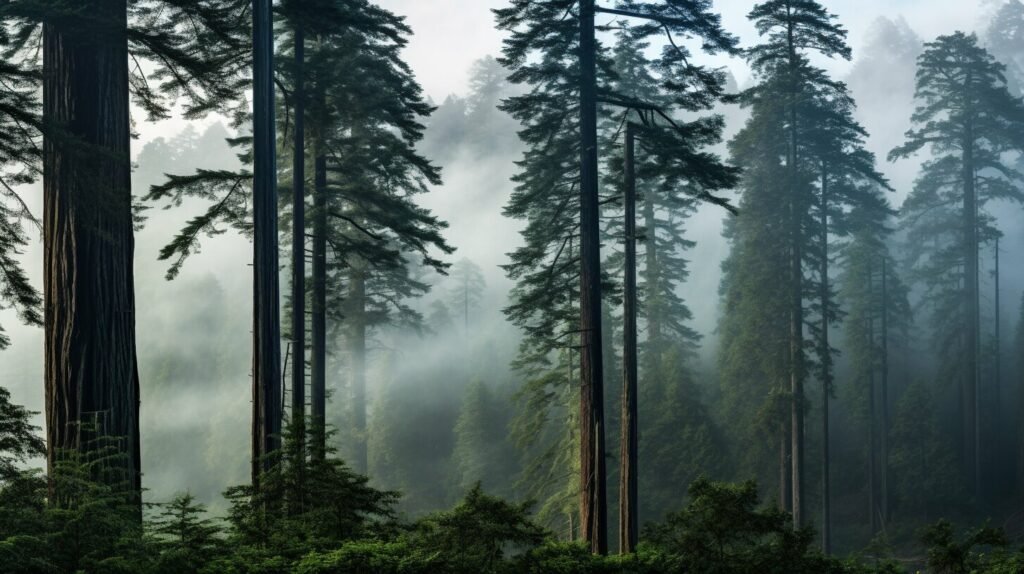
The conservation efforts made to protect these trees have resulted in the preservation of many national and state parks, some of which are home to some of the oldest and largest trees in the world. These efforts have allowed us to enjoy the California Redwood in all its majestic glory while ensuring that future generations can appreciate these natural wonders as well.
The Size and Measurements of the California Redwood
One of the most impressive features of the California Redwood is its size. These trees can grow to be hundreds of feet tall and have trunk diameters that can reach up to 30 feet. The tallest tree ever recorded was a coast redwood that stood at a staggering 379 feet tall!
The California Redwood is also the largest tree in overall volume, with some of the oldest trees dating back over 2,000 years. In fact, these trees can grow 2-10 feet per year and it’s estimated that a mature stand of redwoods can remove 2,000 tons of carbon dioxide from the atmosphere every year.
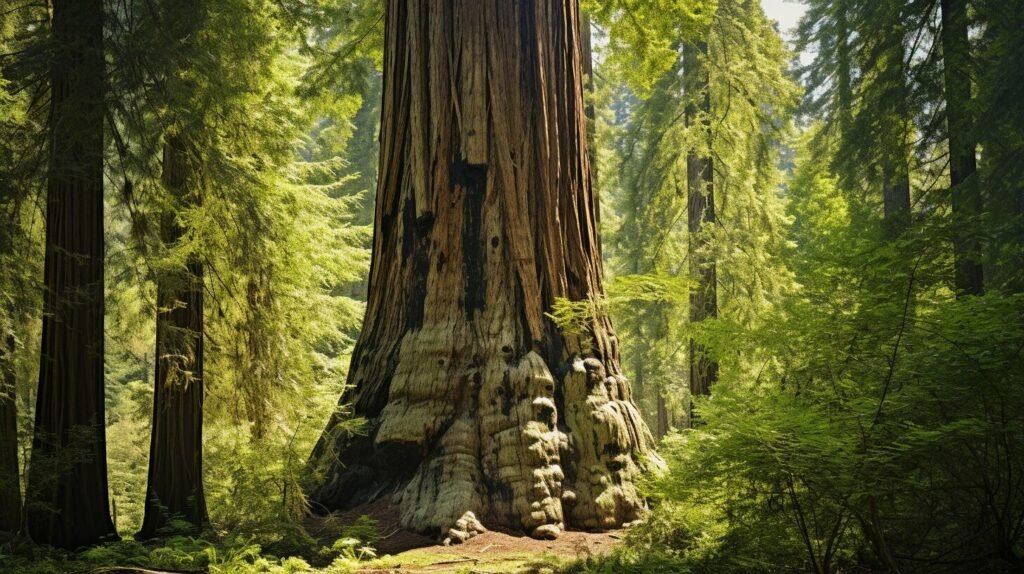
Standing next to one of these giants is truly a humbling experience. The sheer size and scale of the California Redwood is hard to capture in words or even photographs. It’s something that needs to be experienced in person to fully appreciate.
Despite their size, the California Redwood is surprisingly lightweight for its mass. The wood is often used in construction for its durability and resistance to decay, but it’s important to note that harvesting these trees can have negative impacts on their ecosystems and the surrounding wildlife.
Overall, the California Redwood is a truly remarkable tree that continues to inspire awe and amazement in those who come across it. Its incredible size and growth rate are just a few of the reasons why it holds such a special place in the hearts of Californians and nature enthusiasts around the world.
The Conservation Efforts and Future of the California Redwood
The California Redwood is widely considered a natural wonder, and as such, conservation efforts have been made to protect this magnificent tree. One of the biggest challenges has been to balance the harvesting of this resource with the need to preserve it for future generations. The California Redwood belongs to two genera – Sequoia and Sequoiadendron, and one of these trees is the General Sherman tree, which reaches a height of 400 feet.
To ensure the survival of the California Redwood, many organizations are working tirelessly to protect and preserve these magnificent trees. Logging activities have been reduced in areas where these trees grow, and new growth is actively monitored and protected. The aim is to maintain the old-growth forests that the California Redwood is part of, as they are crucial to the long-term survival of the species.
Innovative conservation techniques are also being employed to protect the California Redwood, including controlled burns that protect against wildfires, which can be devastating to these trees. Careful monitoring and management of water resources ensure that the California Redwood has the necessary moisture it needs to thrive.
In the future, conservation efforts will continue to focus on protecting and preserving the natural habitat of the California Redwood. This will involve collaborating with various organizations, such as national parks and forest services, to develop and implement policies that protect the natural environment. It is essential to ensure that the California Redwood can continue to thrive in its natural habitat so that future generations can enjoy this natural wonder for years to come.
Overall, the conservation efforts being made to protect the California Redwood are crucial to the survival of the species. Through these efforts, we can safeguard the future of this magnificent tree for generations to come.
FAQ
What is the California State Tree?
The California State Tree is the majestic California Redwood.
How was the California Redwood designated as the state tree?
The California Redwood was designated as the official state tree by the state legislature in 1937.
What is the significance of the California State Tree?
The California Redwood holds a special place among the state symbols and represents the natural beauty and history of California.
What are the characteristics of the California Redwood?
The California Redwood is the largest and tallest tree in the world, with distinct species including the coast redwood and the giant sequoia.
Where is the natural habitat of the California Redwood?
The California Redwood prefers the coastal regions of California, particularly the Sierra Nevada, where state parks, national parks, and redwood forests are preserved.
What are the unique characteristics of the California Redwood?
Some unique characteristics of the California Redwood include its thick bark that protects it from wildfires and its reliance on winter rain and summer coastal fog for growth. These trees cover around two million acres along the California coast.
Where can I find the California Redwood?
The California Redwood can be found in diverse locations, with some stands located within 50 miles of the Pacific Ocean. They are preserved in national parks, forests, and old-growth areas.
How large can the California Redwood grow?
The California Redwood can have a significant trunk diameter and can grow up to several hundred feet tall. It can grow at a rate of 2-10 feet per year, making it the largest tree in overall volume.
What are the conservation efforts for the California Redwood?
The California Redwood is widely considered a natural wonder, and conservation efforts are being made to protect it. Harvesting these trees poses challenges, but there are ongoing efforts to ensure their survival and future prospects.







